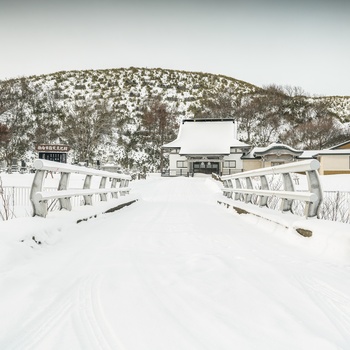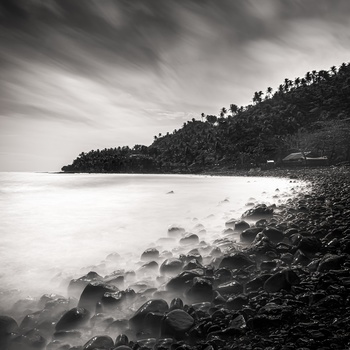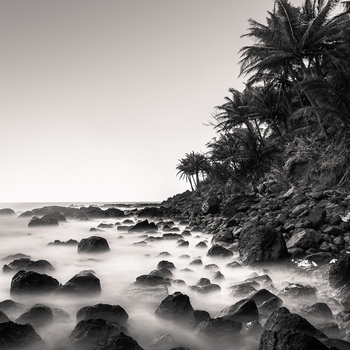Landscape photography often requires multiple focal lengths to display a certain variety of output. But does having one lens, a prime lens, enough to shoot landscapes?
A prime lens has a fixed focal point. In contrast with a zoom lens that offers a variety of focal lengths, the angle of view cannot be changed with a prime lens. The only way of enlarging your subject or fitting more details in your photo is by physically getting closer to the subject. This contrast usually leads to the question as to what prime lenses are good for in the genre. I mean, if it offers less, why should you get one for landscapes?
On Variation
The typical landscape shots involve either ultra-wide angle to wide angle lenses that range from 12mm to 35mm, but these involve either carrying multiple lenses in your bag or a zoom lens, but this doesn’t mean that carrying one prime lens won’t be sufficient. The succeeding images were all taken only at 24mm:



You can see that there is still a lot of shot variation on the images. The techniques used vary between a single shot (first), long exposure (second), and exposure stacking (third). There can be more variation by utilizing the environment, changing the field of view, and taking advantage of the conditions, but these can all be done with just one focal length.
On Versatility
Most often in gear comparisons, we deem the prime lens sharper than its zoom lens counterparts due to many factors, such as build and overall purpose. Though there will always be one better lens than another, a prime lens removes some form of versatility due to the fact that it limits the user to a specific focal length. However, it does extend the user’s creativity by compensating for the disadvantages of the gear. Most often true in street photography and in videography, carrying only a prime helps the user focus more on the timing and composition with the limits in mind, thus expanding their creativity. This also helps the user hone adaptability to certain situations.
One downside of having just one prime lens for landscape photography is that it limits your shot options. If you bring just a 24mm on a seascape shoot, you can use foreground elements to your advantage or shoot a subject dead center in the frame, but these subjects will only be subjects that your lens can reach. If you see a subject that requires a long lens, you will automatically have to forfeit taking its photo.
This is, however, also a good thing, since this gives you more time to focus on shots you can take since the options you have during these shoots are sometimes very limited. This can also give you ample time to scout for a good spot, examine the area, and then take your time composing your shot.
On Portability and Usability
Landscape shoots are very taxing, especially if you carry a whole bag of gear with you. Seascapes, in particular, most often demand getting your feet wet to get the shot, and doing so also limits your movement when carrying a plethora of lenses and other gear on your back. Having one lens already attached to your camera lessens these issues and eliminates the thought of “where do I place my gear” in scenarios where you are knee-deep in the sea. Having a huge backpack can be limiting. I’ve found myself in this scenario several times, where I think of a different shot and need to change lenses while taking my shot in the water.
A prime lens is also generally lighter than a zoom lens and makes for a perfect walkaround when attached to the camera. I’ve found a short video from Tom Mackie where he discusses in his video why he brings a prime lens in his arsenal of gear and what he claims is the best one to use for landscape photography: the Nikon 24mm f/1.8 prime lens.
In comparison to the Nikon 24-70mm zoom lens, the Nikon 24mm f/1.8 prime lens weighs less and is only half the size. If you like shooting directly at the sun, the prime lens captures sun flares with ultra-sharp points with minimum flare that requires touch-up in post-processing. The overall sharpness is fantastic, and the focus is responsive and snaps into place quickly.
There are a great many features that other lenses also offer, such as image stabilization and fast autofocus, but these are generally just add-ons to what the main purpose of these lenses are for the user.
On Cost
Nowadays, the cost of prime lenses versus zoom lenses can be debatable. Since technology has evolved, there is no price benchmark for prime and zoom lenses, but there are always a few prime and zoom lenses that fit into a specific budget. Smaller sensor sizes generally cost less than their full frame counterparts and also offer great features for their prices. Build quality is definitely something that affects the price, but depending on the purpose of the lens, you can sometimes get away with a cheaper lens for almost the same amount of sharpness and features.
Final Thoughts
Prime lenses are still a strong option in landscape photography. They bring the advantages of being portable enough to carry during long trips and are generally more cost-friendly. Using them on a regular basis also helps hone the artist’s adaptability to situations and helps develop creativity in composition and technique. Although there are limits in using just one focal length, the advantages of using just one lens are also a great way to develop your skills as a photographer. These limitations should not hinder you from creating amazing images but should be able to stretch your imagination and artistic style.